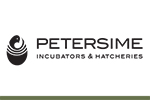
Cremona International Livestock Exhibitions present the Milk Village: a new way to live the fair!
Cremona is the italian capital of milk. These are the figures of a great tradition:
•Production (2013 – 2014): 1,230,000 tons. equivalent to a fourth of production in Lombardy region and to 10% of total Italian production
•Only the Province of Cremona has 800 cattle farms and 300,000 cows
•Milk quality and process safety are the most important features of dairy production: near to Cremona are produced 14 PDO and PGI (in Lombardy 31, and in Italy 274). Among them, the most well-known cheese is the Grana Padano
Milk Village to enhance the dairy breeding
The Milk Village is a dedicated space created to enhance the entire dairy chain along with the milk processing industry and its players. Its aims are:
•Giving ideas to supplement income and improve the work of breeding companies: milk processing and the marketing of by-products represent an interesting and concrete business opportunity for breeders.
•Providing know-how and professional updates: in order to go into new areas or to supplement the income with new activities, companies need to acquire an adequate know-how about production, legislation, machinery and business management.
The Milk Village will present a rich program of workshops and seminars with the hot topics of the dairy chain, thanks to the collaboration with the most important Italian research institutes and associations, such as CREA, CRPA, ISMEA and the Exhibitors of Cremona International Livestock Exhibitions
Milk Village is a marketing tool to enhance innovation and business powered by Festival del Latte project supported by Regione Lombardia, Assessorato Agricoltura and Chamber of Commerce of Cremona
At Cremona International Livestock Exhibitions, the CRPA will present in a first-ever preview the results of the Biogas2 Project
Claudio Fabbri, researcher at the Research Centre for Animal Productions, will host a workshop on the 30th of October in Cremona on a new study aimed at improving compatibility between biomass and livestock waste.
Biogas producers are faced with a great challenge linked to the production of biomethane. “With the complete definition of the legal framework, the biomethane market is finally open. Therefore, we are faced with a great opportunity but also with a great challenge because producing biomethane is far more complex than producing biogas”, says Claudio Fabbri, a CRPA researcher who will be in Cremona hosting a workshop during the International Livestock Exhibitions.
The latest policies would confirm the continuation of incentives for small plants
“Beyond wanting to produce electricity or biomethane with a biogas plant, says Fabbri, the studies and experiments we have conducted in recent years have made it clear that for a proper functioning it is essential to have a correct size and management of the plant itself. This is a fundamental aspect and before constructing a plant it is necessary to first determine with which biomass the plant will be fed”.
Yet, according to the figures, the construction of plants has recently suffered a strong slowdown. “Fabbri says that this is true, the construction industry is in crisis partly because the Ministerial Decree of the 6th of July 2012 has not been as successful as hoped, and partly because of the difficulties associated with the economic crisis and the access to credit. We know there are many projects approved by the relevant authorities and ready for implementation, but for economic reasons mentioned earlier, they currently remain only on paper. We hope that the existing incentives for small plants fed with manure (up to 250-300kW capacity) will be maintained as the latest political news seems to suggest.”
“Organic” dairy farming: a growing trend and a new opportunity for Italian breeders.
•At Cremona Livestock Exhibitions (28th to 31st of October) for the first time Ismea will assess the situation through a strategic conference and a number of workshops within the Milk Village.
•Trends confirm that sales of “organic” dairy products are growing with respect to the conventional ones
According to figures by Sinab (National Information System on Organic Agriculture set up by the Italian Ministry of Agricultural, Food and Forestry Policies) the national heritage of organic dairy cattle reaches today about 45 thousands units, accounting for 20% of all the cattle presents in organic farms. According to an estimate by Ismea, the 2014 milk production is higher than 300 million litres for a production value of 158 million Euros (data by Ismea-Nielsen) with a 28% premium price recognized to stalls.
“This is good news, says Ezio Castiglione, President of Ismea, showing a sharp increase compared to the serious difficulties the conventional dairy sector is facing. The combination of the end of milk quotas, the Russian embargo and the Chinese demand slowdown has heavily impacted the stall remuneration, requiring emergency measures to support the sector such as the Milk Plan promoted by the Minister Maurizio Martina. Even in terms of consumptions, concludes Castiglione, in the first half of 2015 organic milk and its by-products have had over a 4% growth compared to the negative trend in sales in the milk sector as a whole”.
Italian families reward the sector and their purchases ensure an important premium price especially to yogurt and fresh milk
It emerges from an analysis that in 2014 Italians have spent on the whole 100 million Euros on milk and its by-products. A figure that is likely to increase as seen in the positive trend on purchases in the first six months of 2015. More specifically, yogurt purchases increase at a rapid pace (+10.4%) alongside positive but less important changes for cheese and dairy products (+2.1%) and fresh milk (+0.7%). The only negative figure concerns UHT milk, which decreases by 4.4%.
From the Ismea survey it emerged that not only the Italian consumer recognizes on average a premium price to yogurt and organic fresh milk compared to the conventional one respectively by +30% and +20% (2015 data), but also that the dairy sector represents the third organic category after the fruit and vegetable one and the cereal by-products one, covering a share of 10-11% of the total organic sector.
In Italy the sale of “organic” dairy products has a lot of potential
Looking at Europe and the rest of the world, the latest data available show that in 2013 in France the production of organic milk has reached 499.3 million litres equal to the 2% of the milk produced, while in Germany, in 2014 there was a production of 708 million litres, such as 2.3% of the total production. Moreover, regarding the value of the world market in the organic dairy retail sector, according to Promar Estimates Datamonitor, in 2013 they were reached 7.67 billion dollars divided into 50% in Europe, 40% in North America and 10% in the remaining continents.
Going back to our country, there is a significant potential for the organic dairy sector, so much that organic dairy product sales in retail does not exceed 1.5% (source: Ismea-Nielsen), instead in Germany it reaches 5.6%, in Denmark 5.6%, in France 3% and in the UK 7.5%.
Workshops with an “organic” theme within the Milk Village at Cremona International Livestock Exhibitions:
•Selling “organic” products: which markets, which channels, which prices (28th October, 12am)
•Financial instruments and grants for organic companies (29th October, 9:30am)
•“Organic” breeding: rules and certifications (29th October, 10:45am)
Moreover, for a strategic vision of the sector, on the 28th of October at 2:30pm in Guarneri Room there will be a conference on: “Organic Livestock: the future of the sector in numbers, politics, legislation and market”.
Technology for breeding: from microphones in stables to find out which calves have a cough, to software for customized food rations for each bovine animal.
Precision livestock will have a dedicated workshop at Cremona International Livestock Exhibitions (28th-31st October).
After precision farming, now it is the time of precision livestock. Information and electronics technology is likely to play an increasingly important and crucial role in breeding, improving the livestock and company management.
In the next edition of Cremona International Livestock Exhibitions there will be a seminar on precision livestock and the benefits from its application in the stable. This seminar is scheduled for Friday 30th of October at 9:30am and is organized by CremonaFiere in collaboration with Crea (Council for Agricultural Research and Agricultural Economics Analysis).
An innovative technology that allows to monitor the cow all day and act quickly whenever required
“Even though there are very few farms adopting this practice at least in Italy, Giacomo Pirlo, researcher of Crea and moderator of the seminar which will be attended by technicians and builders, explains that livestock farmers are paying an increased attention and interest. Today, talking about precision livestock in a dairy cow stable means to approach a model of innovative breeding, and also more efficient. In fact, precision livestock allows to constantly monitor animals throughout the day thanks to the application of modern information and electronics technologies. This allows to check real time changes in the cow’s behaviour, and thus act quickly if a problem occurs and before the situation would require more invasive procedures”.
Information and electronics technology that characterizes precision livestock is processed by software through which, among others, it is possible to formulate the best food ration to be administered to a specific cow that in that particular period may need a diet that more corresponds to a number of symptoms of sickness recorded by the technology applied in the stable.
Food ration, heat, health status of the cow. With precision livestock nothing can be left to chance
“Pirlo says that thanks to precision livestock it is possible to get a very reliable feedback on heats, today identified by the pedometer application or by the farmer who visually checks the state of the cows. There are other tools, such as microphones placed on certain points of the stable and able to report any cases of cough in calves”. There is more efficiency and somehow an even more professional breeder who, while maintaining its key role in the management of the herd, can take into account greater investments thanks to an innovative technological support. “Dr Pirlo says that today, of course, around the world there is a tendency to have more and more large farms, where the high number of cattle affects the possibility of a visual check by the breeder as it was the case until a few years ago. The interest we are seeing from the production world shows the level of awareness towards a more innovative and efficient way of raising dairy cattle. I think this is a very positive evolution, concludes Pirlo, which shows that breeders do not want to escape from a technological progress while keeping a tradition that, in our country, has very deep roots.
New income opportunities for Italian farms are also achieved through the production of ice cream within the company with the “world’s smallest dairy”.
In Cremona during the Cremona International Livestock Exhibitions (28th-31st October) there will also be the Carpigiani Group, demonstrating that farms are increasingly involved in the direct processing of milk.
Carpigiani, a company in Anzola Emilia (Bologna) founded in 1946, has always been committed to manufacturing machines for the production of home-made ice cream, and for the first time it will take part along with Perenzin Latteria (an artisanal dairy in the province of Treviso with more than 100 years of experience) to Expocasearia, a milk processing Exhibition that takes place within the Cremona International Livestock Exhibitions (28th- 31st October 2015).
At first sight this event might seem exceptional, also looking at the group of technicians and professional targeted by the most important livestock exhibition in Italy. Yet, on a closer look, the attendance of an international company like Carpigiani, which through the production of its machines puts milk at the centre of its production system, can only be the natural evolution of an exhibition, such as the Cremonese one, increasingly specialized and attentive to changes that the global market sets in terms of professionalism.
Cremona International Livestock Exhibitions are for Carpigiani the best opportunity to promote a new business which directly connects producers and consumers
“Our focus is on Cremona International Livestock Exhibitions, considering them the only national livestock fairs able to meet our aims, says Andrea Cocchi, the General Director of the Carpigiani Group. In addition, our international dealers attend similar international exhibitions related to the dairy sector such as in England, Australia and Japan where it is common to find in farms a machine for the production of ice cream made from milk produced in the farm”. Thus, this is a real source of supplementary income for the breeder who can use the surplus of milk towards the production of ice cream, but also cheese.
Of course, jointly with Latteria Perenzin in San Pietro of Feletto, in the Treviso province, for a couple of years Carpigiani has developed Cheesemaster, an innovative machine for dairy processing which will be showcased at Expocasearia through courses and demonstrations organized and managed by the International Academy of Dairy Art and Carpigiani Ice Cream University.
“Cheesemaster is a real small and compact dairy farm that can be installed in any livestock farm, says Carlo Piccoli, a master cheese maker of Latteria Perenzin and founder of the International Academy of Dairy Art. Thanks to its innovative technology, it is able to produce excellent cheeses which can be sold directly within the farm”.
Affordable, sustainable, multi-purpose. Cheesemaster, the innovative machine that produces cheese, is the result of an innovative and cutting-edge technology
“Meeting Latteria Perenzin allowed us to develop a new technology which makes the business of a small farm more alive and interesting, and allows to diversify the product offered to the consumer, says Andrea Cocchi. With Cheesemaster you can also make a yogurt that can become a delicious ice cream by using a lab easy to set up with an affordable investment. We have studied solutions and in 40 square metres you can open new business opportunities using local products strongly requested by consumers”. The Cheesemaster project, which can be defined as the Carpigiani-Perenzin Dairy System, has its basis on some fundamental aspects like affordability, sustainability and multi-purposefulness. “The innovative control system that characterizes this machine, says Carlo Piccoli who will carry out practical demonstrations at Expocasearia, is designed for an easy use while ensuring the production of several types of fresh cheeses, saving time and energy. Our goal is to efficiently and effectively contribute to supplement the income of the breeder both through the installation of a machine for the production of home-made ice cream and, alternatively but also in combination, with a machine like the innovative Cheesemaster dedicated to dairy processing, using in both cases a share of the milk produced in the farm: let’s not forget that even with 500 litres of processed milk per week it is possible to make a profit.”
Practical demonstrations at Cremona International Livestock Exhibitions:
15 new technologies for more efficient processes.
Wednesday 28th of October from 10:30 am and in the afternoon, from 3 pm, the north area of the fair will be the centre of dynamic performances and practical demonstrations with the use of the latest machines, with the aim of comparing different cultivation techniques. In fact, the initiative will be like a large open-air laboratory dedicated to the innovation and efficiency of agricultural processes.
Fifteen technologies, distributed over ten specific sites, will be presented during the guided tours and held by the agronomist Lorenzo Benvenuti: each demonstration provides a brief description with the machine on idle, then while is on and a final comment on the work done. The arena is about 100 metres long and 20-22 metres wide.
PRECISION FARMING: ECOLOGY AND ADVANTAGES
The techniques introduced thanks to precision farming gave rise to a different way of approaching agricultural processes, opening new scenarios on costs savings and environmental protection: on one hand there is an efficient reduction of inputs and on the other hand maximizing the production offers significant benefits to agricultural and livestock professionals increasing, at the same time, the level of environmental sustainability of the processes employed.
GEOLOCATION OF THE PRODUCTION AND INPUT DIVERSITY
Among the machines tested there will be tractors equipped with GPS which allow its geolocation and thus the activation of guidance systems, or automated guidance, extremely comfortable especially for those who use tools with a broad based area (up to 28 metres). GPS technology allows to precisely map the field, which involves the automatic signalling of any obstacles (light poles, ditches etc). Not only: the main advantage is the possibility of differentiating the individual areas of land in order to dose inputs based on specific production performances. It becomes essentially simple and completely practical to preset the depth of the work, define the amount of manure and fertilizers to be used and adjust the flows of water for irrigation.
REDUCED AND CONSERVATION TILLAGE
Field trials focus on reduced and conservation tillage. Reduced tillage ‘cuts’ energy costs and ensures high-quality results through simplified operations: in this area combined cultivators are more advanced and reliable machines. Conservative tillage, moreover, mixes a part of the crop residue to the soil, precisely in the layer most fertile and most explored by the roots, to improve the fertility of the soil by reducing, at the same time, the risk of soil erosion.
EFFICIENCY
Of great interest is also the material handling equipment for agriculture: telescopic handlers, or telescopic loaders, are able to increase the efficiency of the management of large quantities of straw, hay and fodder that the cattle farm must handle daily. Among the most technologically refined systems there are those multi-purpose machines that have the ability to operate machinery.

















